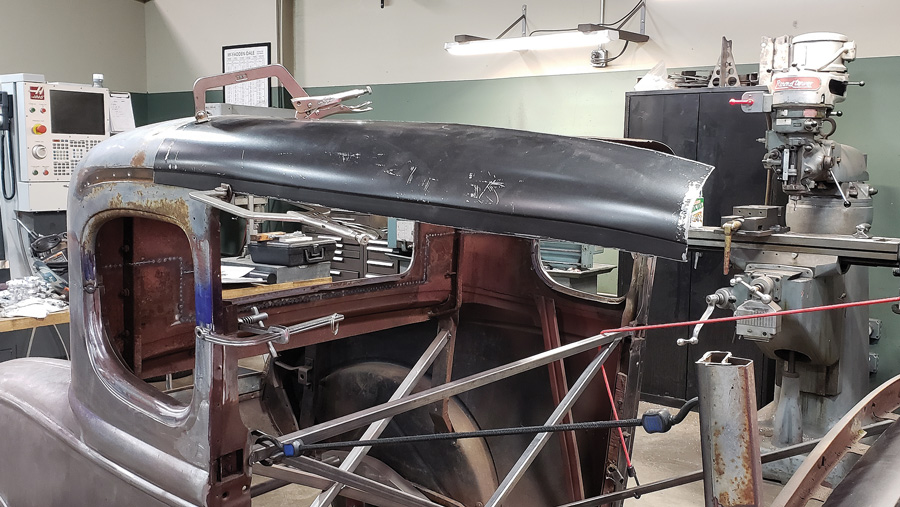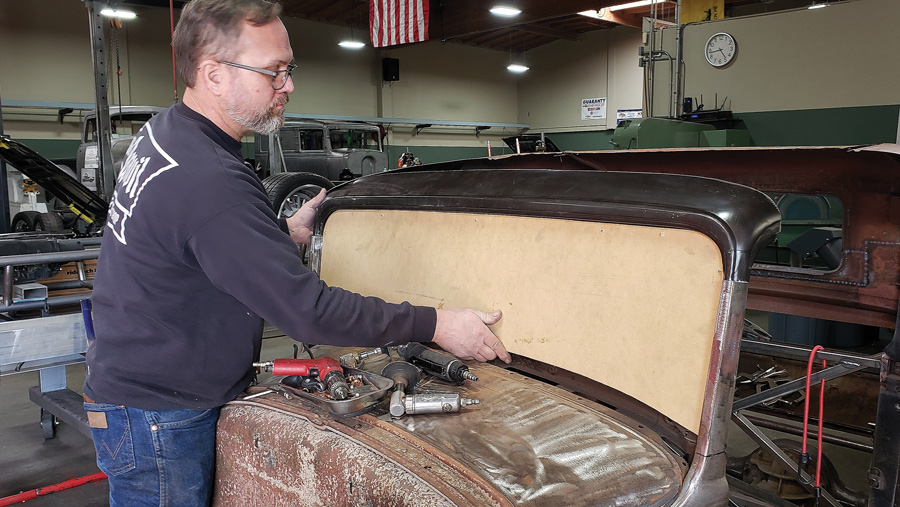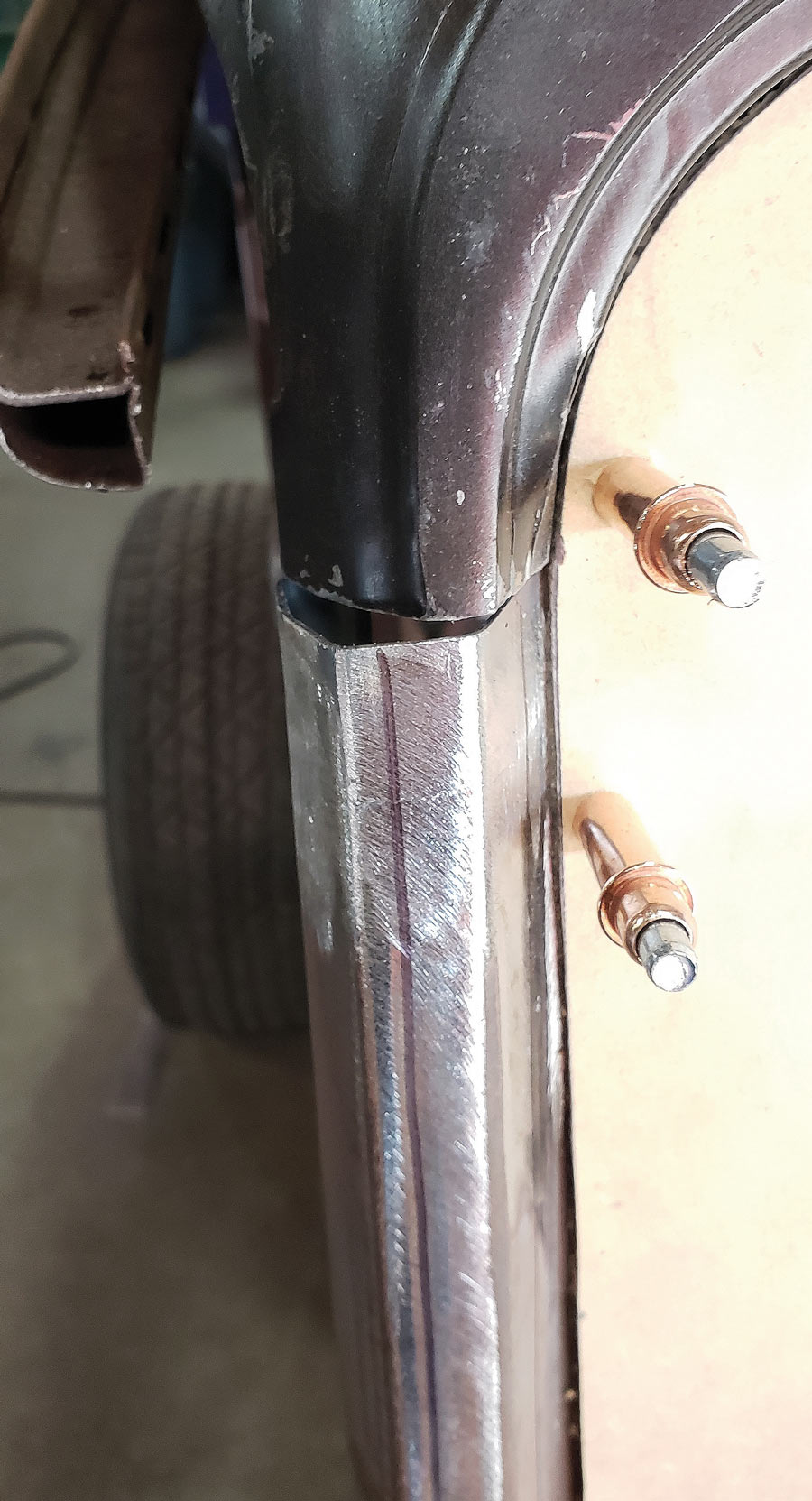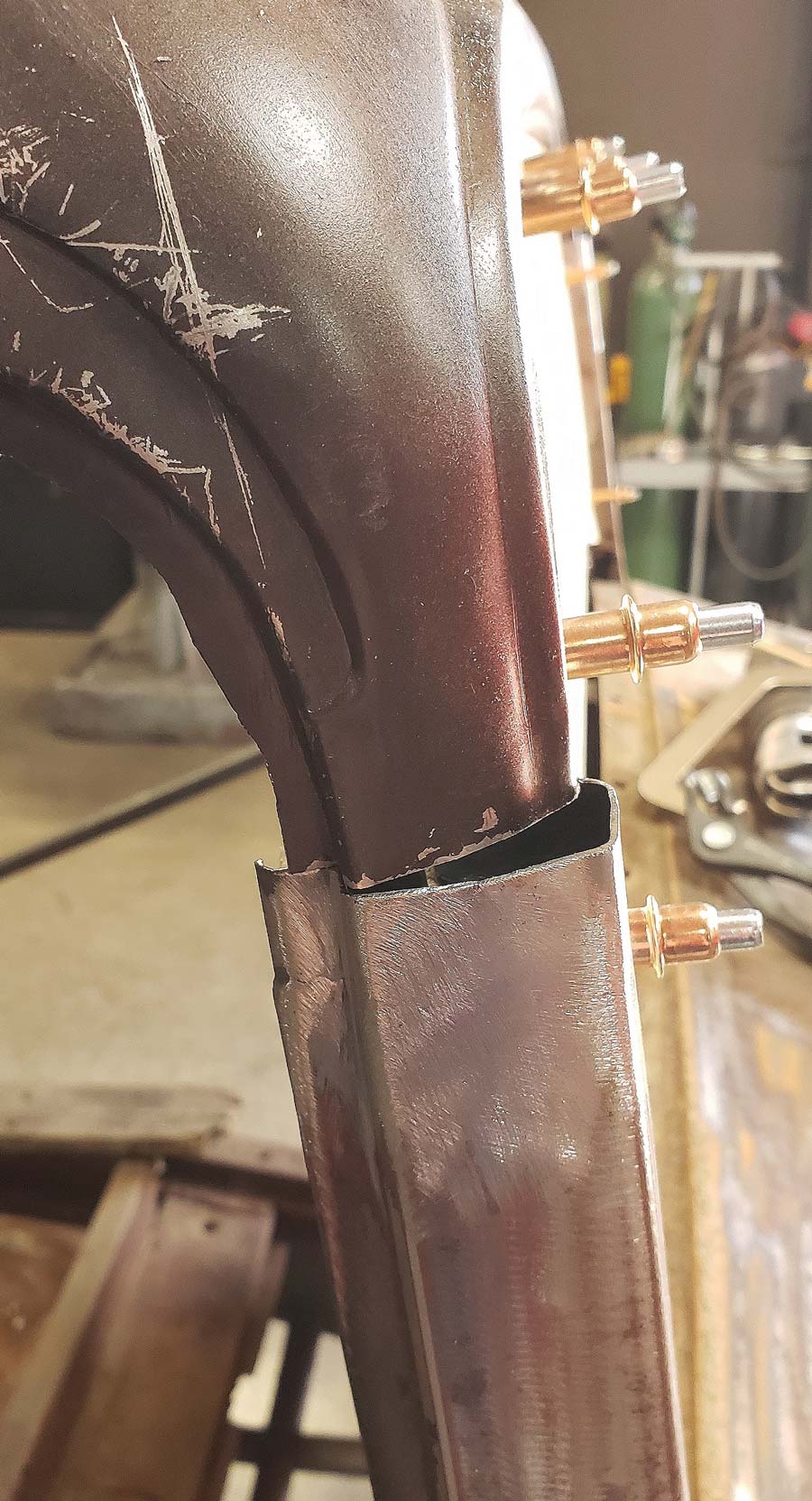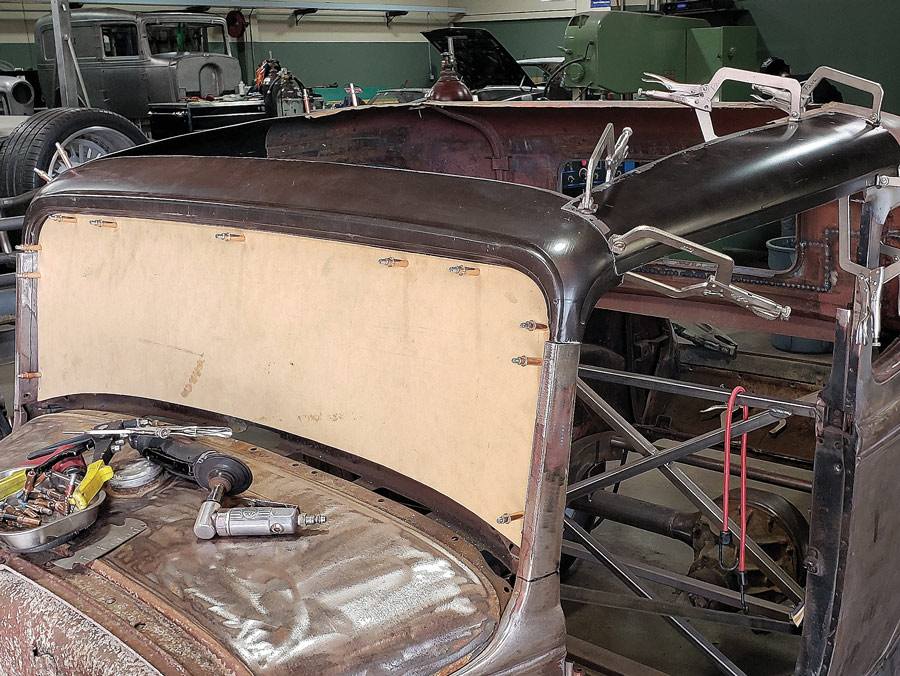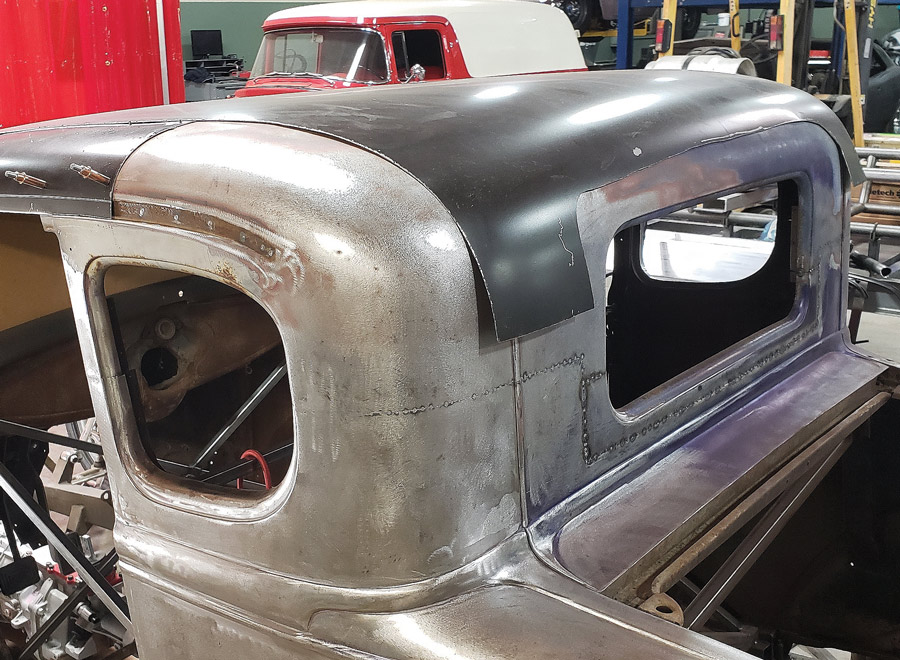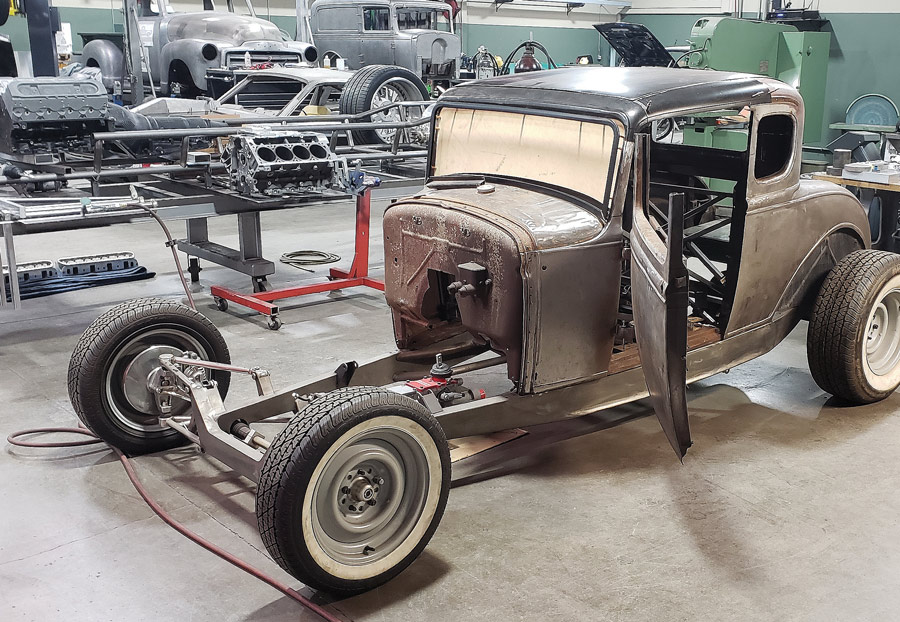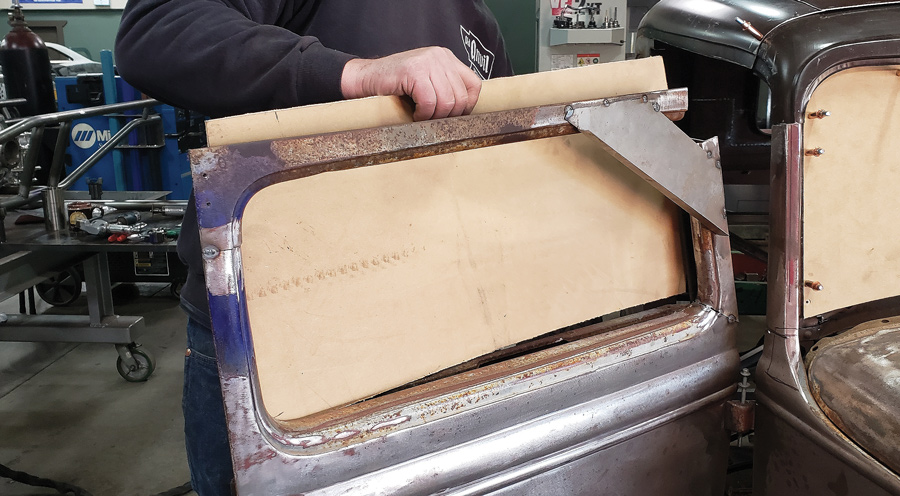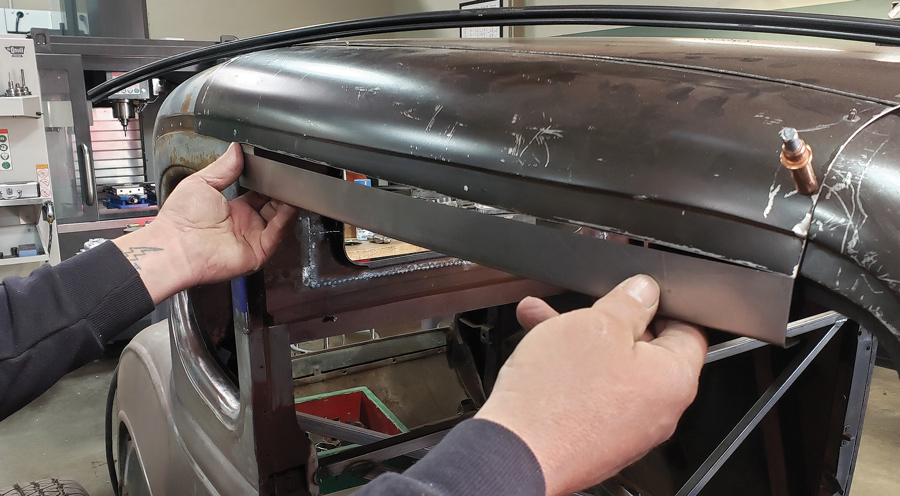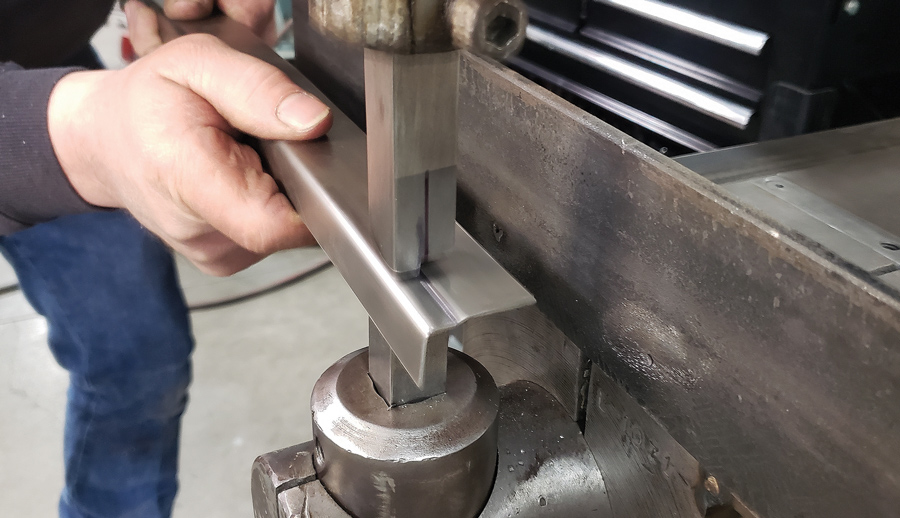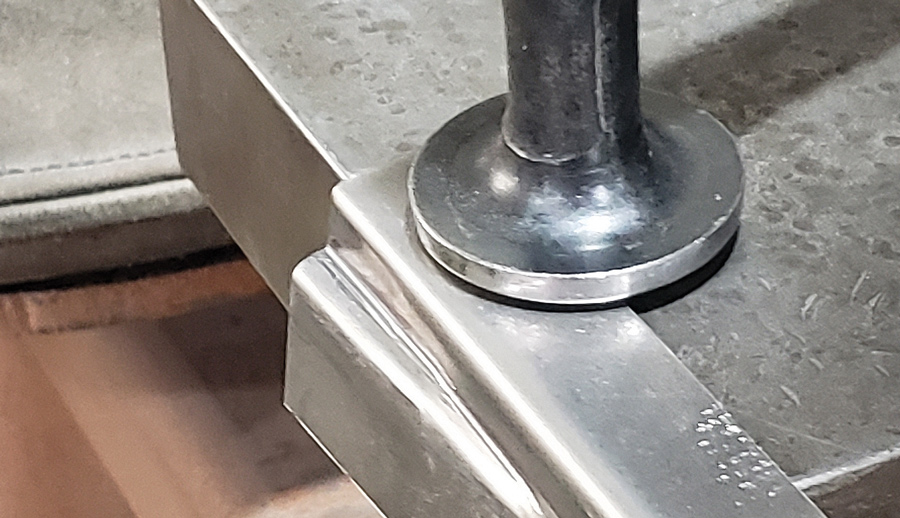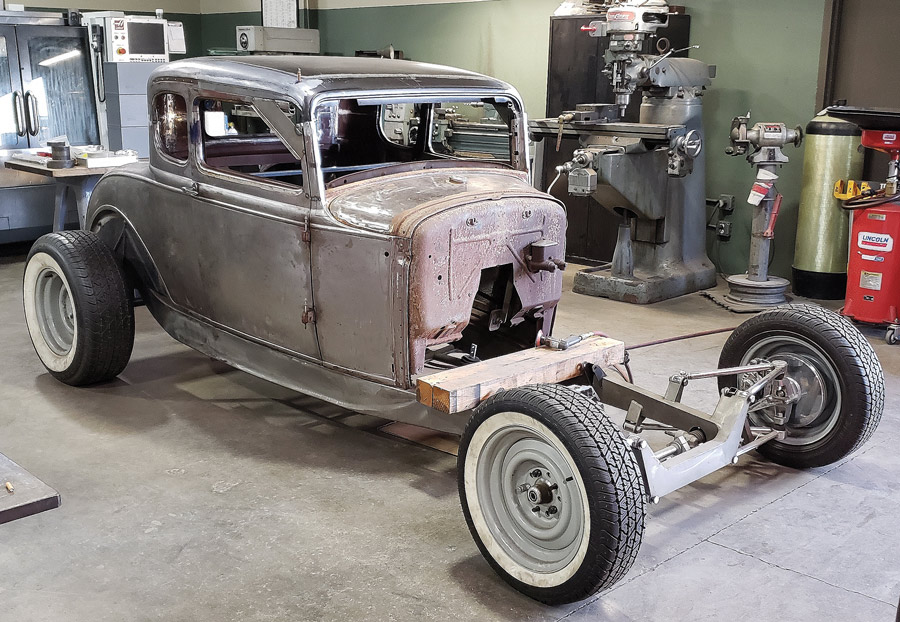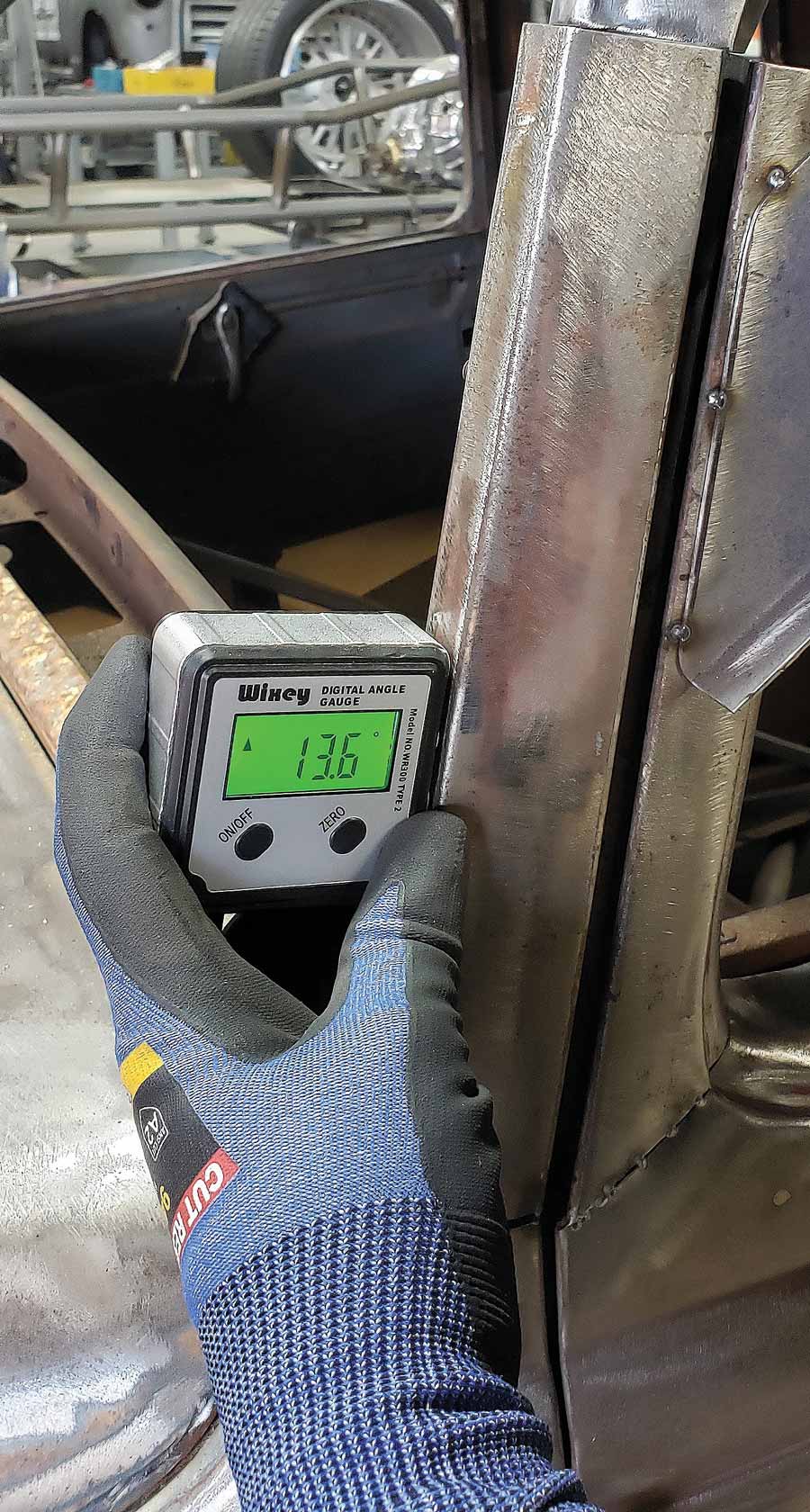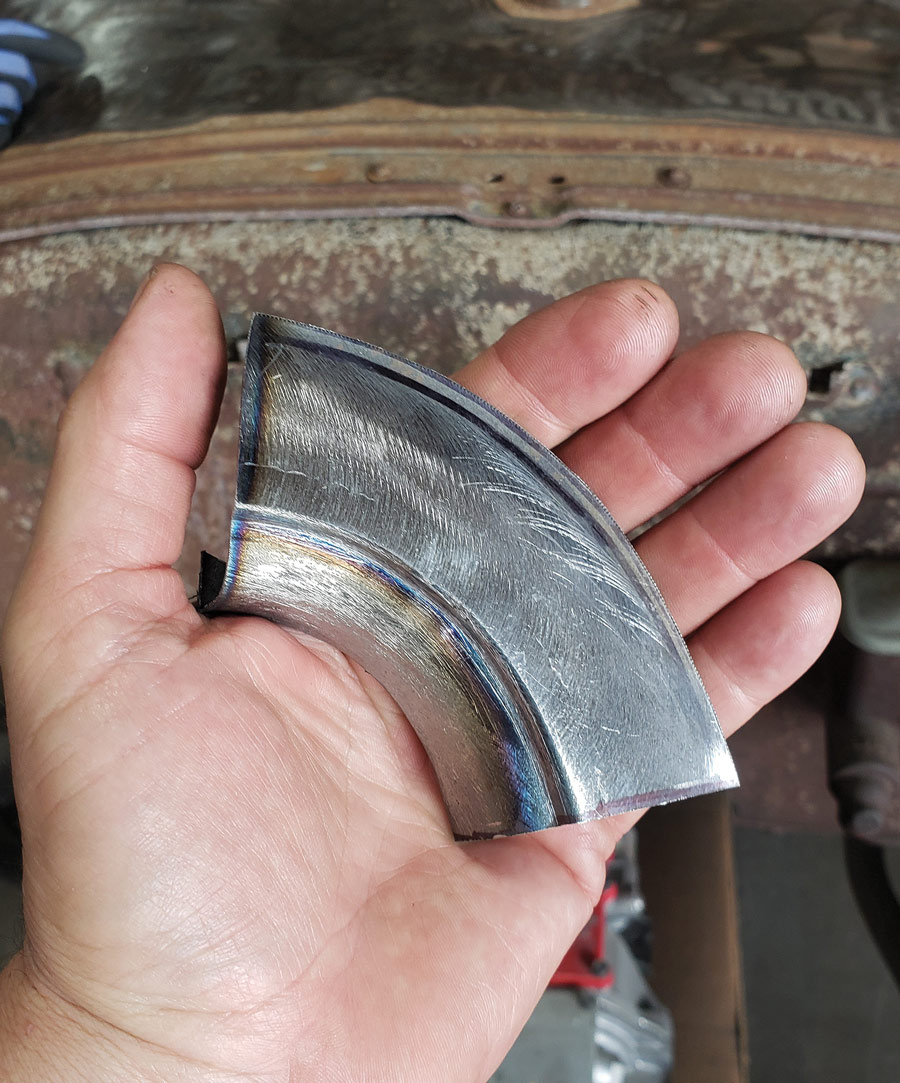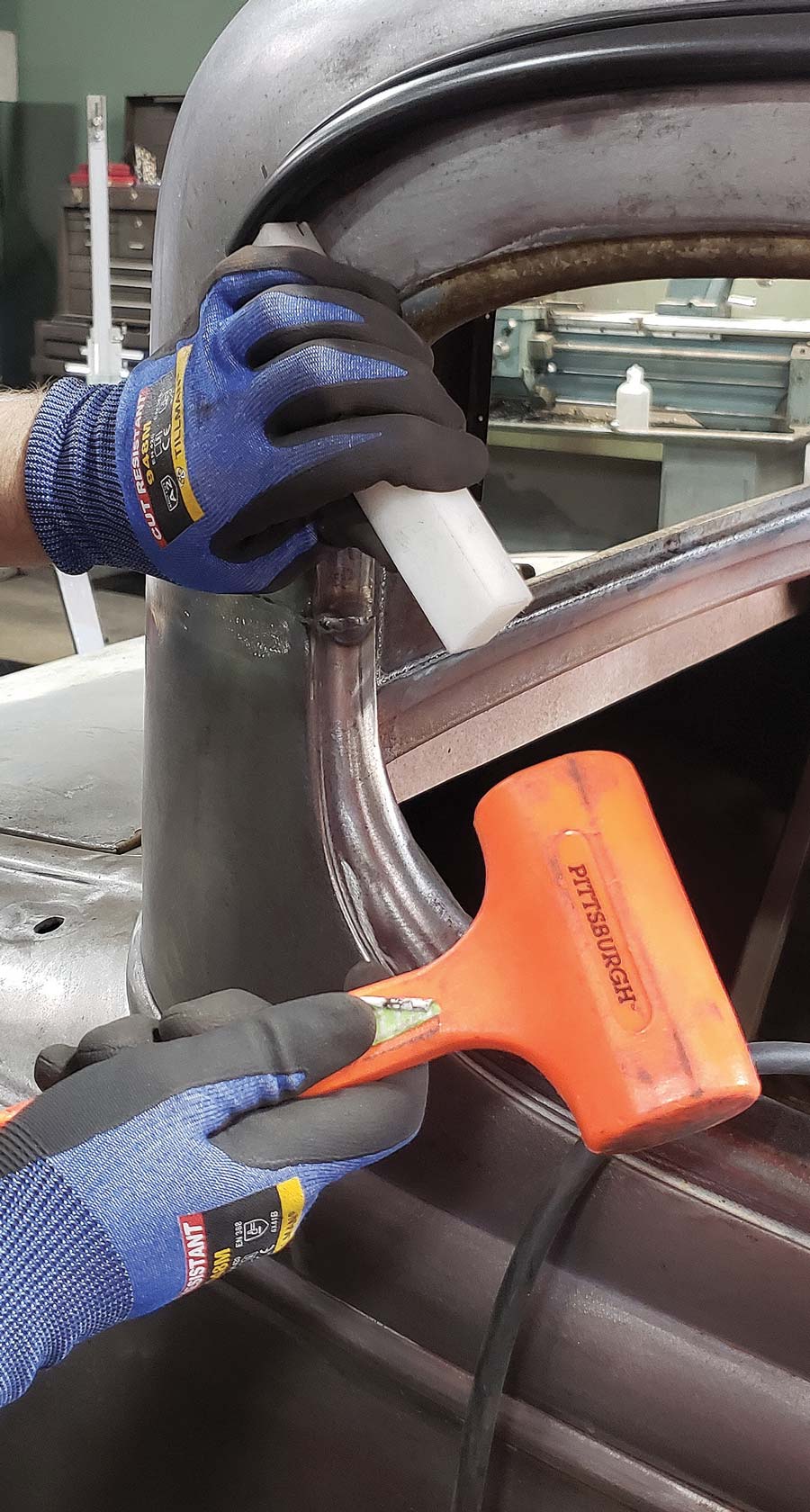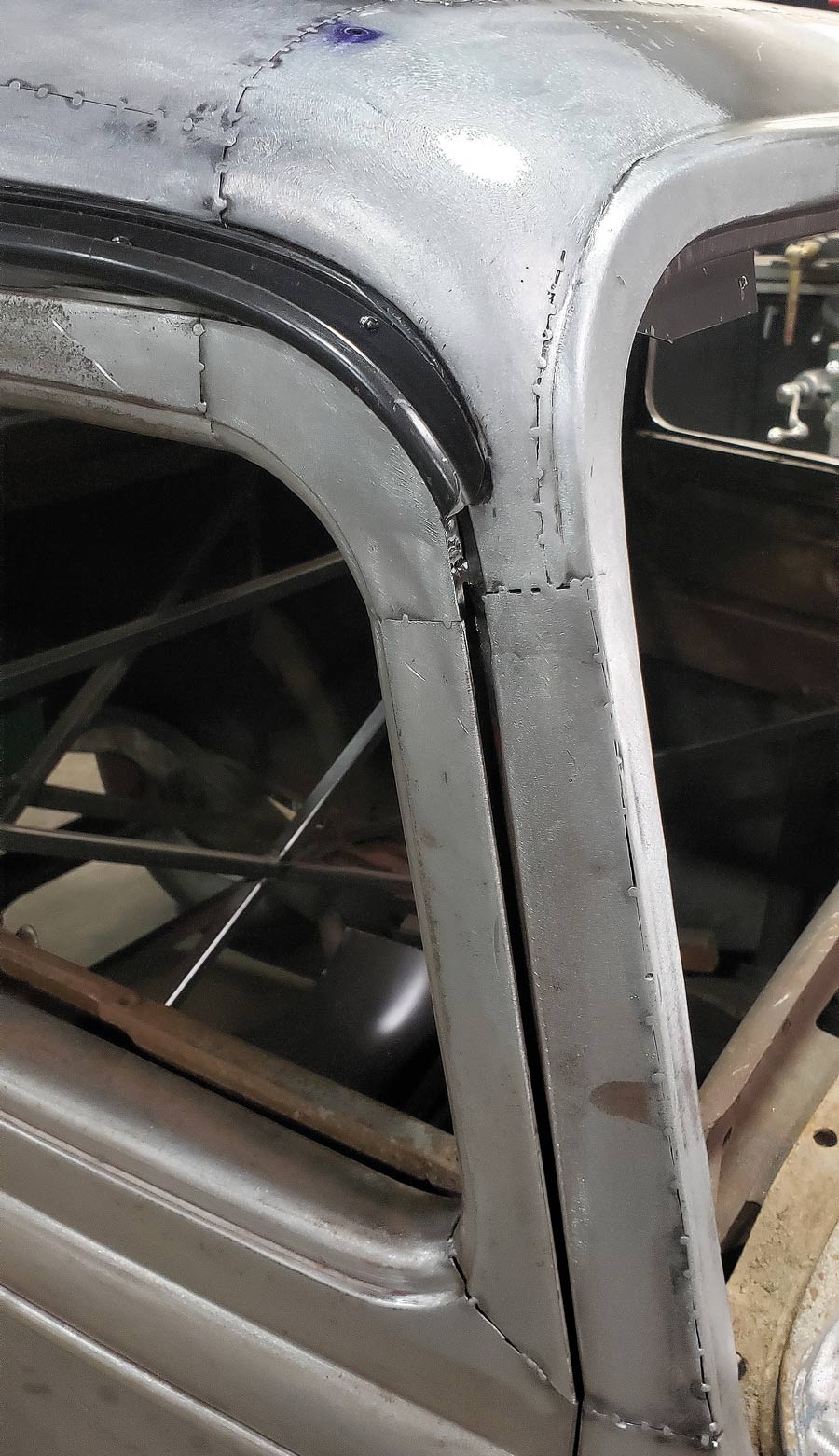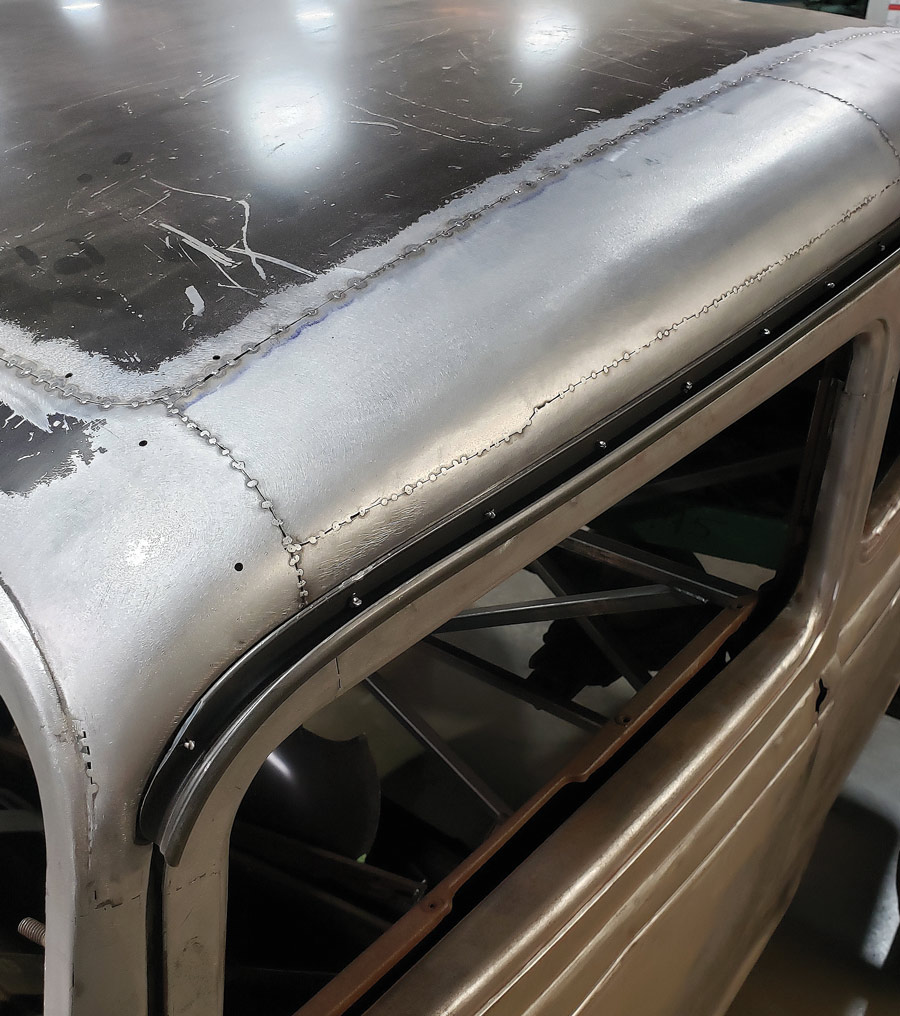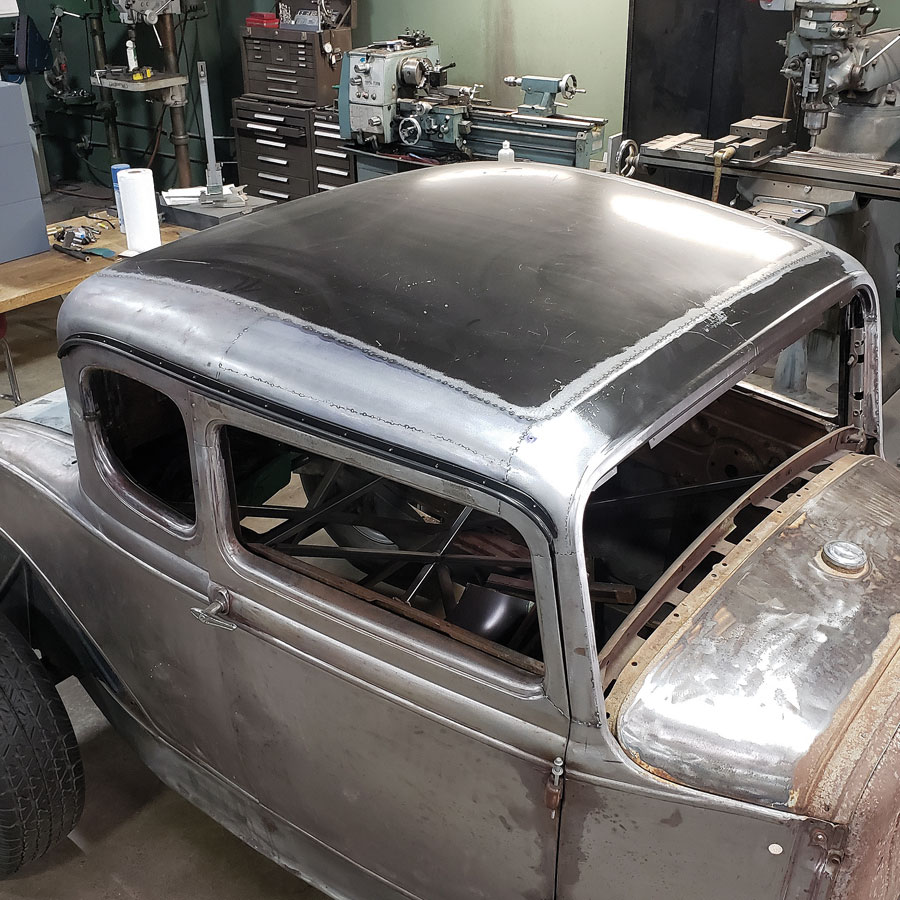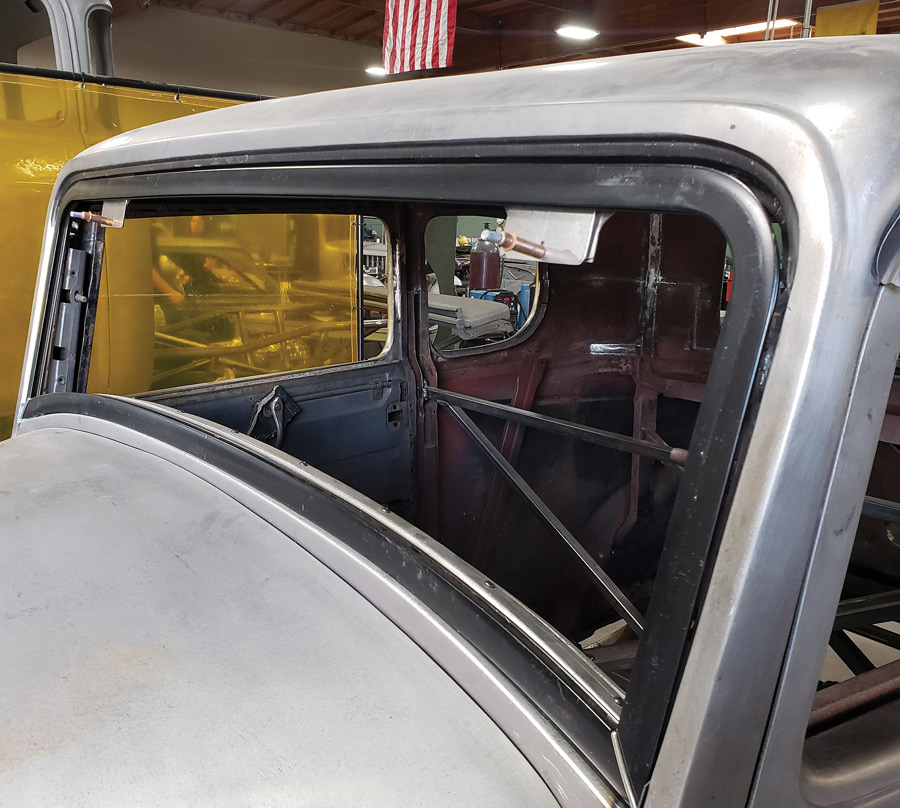
 Photography by THE AUTHOR
Photography by THE AUTHORn the last issue of Modern Rodding we started the process of creating a Model A ’32—a ’31 Ford coupe with a ’32 five-window roof added and then chopped. The work was completed at Old Anvil Speed Shop in Orange, California, which is helmed by Paul and Jenna Bosserman.
In the first part of this two-parter, we saw the initial roof cuts being made, the chop being figured out, and the beginning of how Paul was going to address the leaning A posts back to accommodate the roofline.
The entire reconstruction was done in three phases: first the rear section (from the B posts back) was chopped, which was a pretty straightforward task. But the tricky part was determining not only where the transition would be from the roof to the door top, but if it would be the Model A or the ’32 piece.
Paul was surprised on how close the ’32 roof fit to the old Model A roof, like hand-to-glove in many areas, and nearly all of this work was going to be done by eye—in other words what looked right to Paul. At first Paul thought he’d be using most of the new top section but, as work progressed, he discovered that much of the original Model A roof could be retained. It turned out the ’32 roof would be cut into four sections: the piece above the windshield, the left and right door top sections, and the middle section (the whole rear section of the ’32 with the window was not used at all).
What did turn out to be true is the amount of work it took to get this roof redo to look “right” might not yield the response from the general public it deserves. It’s so subtle only die-hard ’32 or Model A fanatics will get what happened, and chances are they’ll only see a portion of it—the work really is just that subtle.


